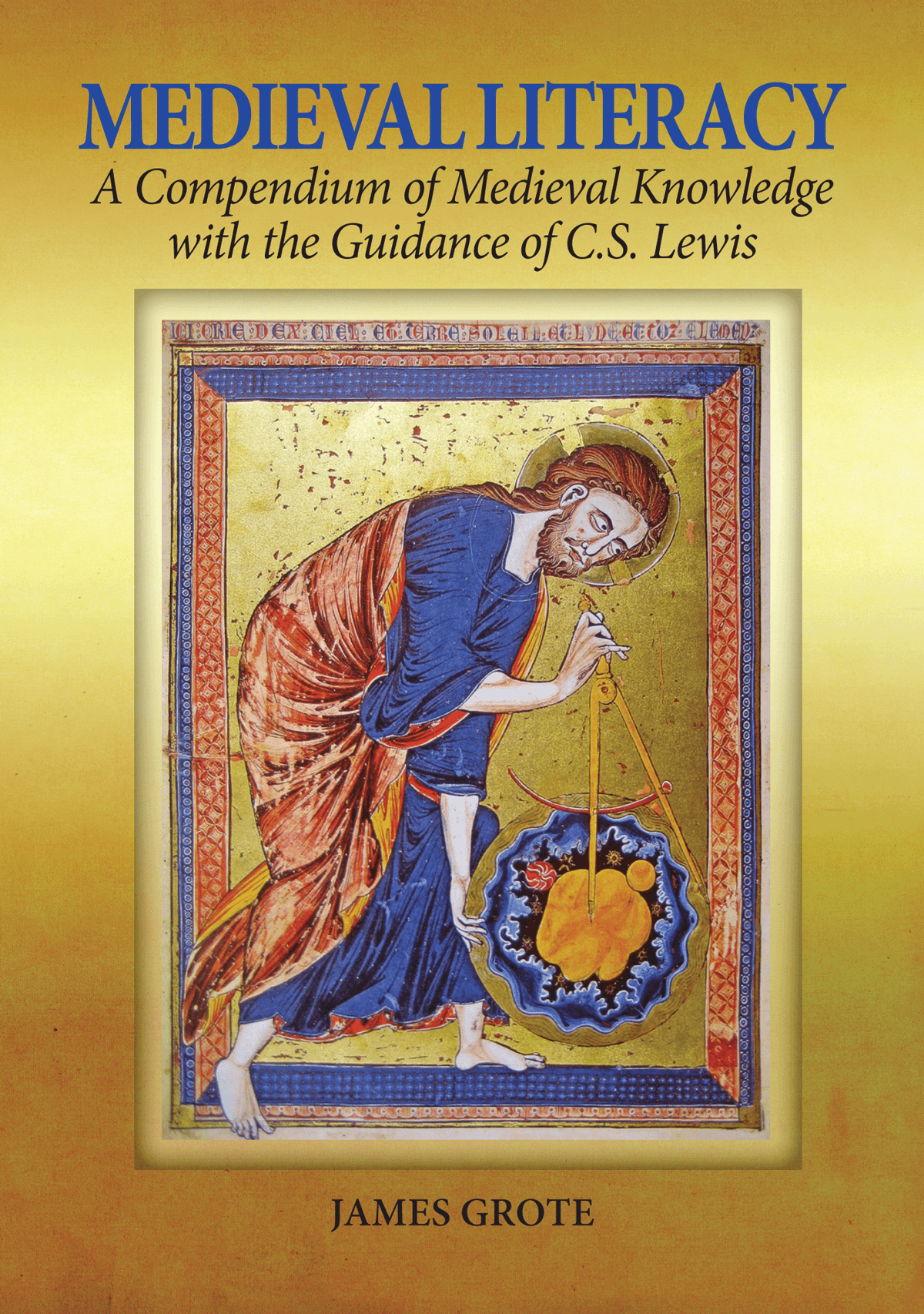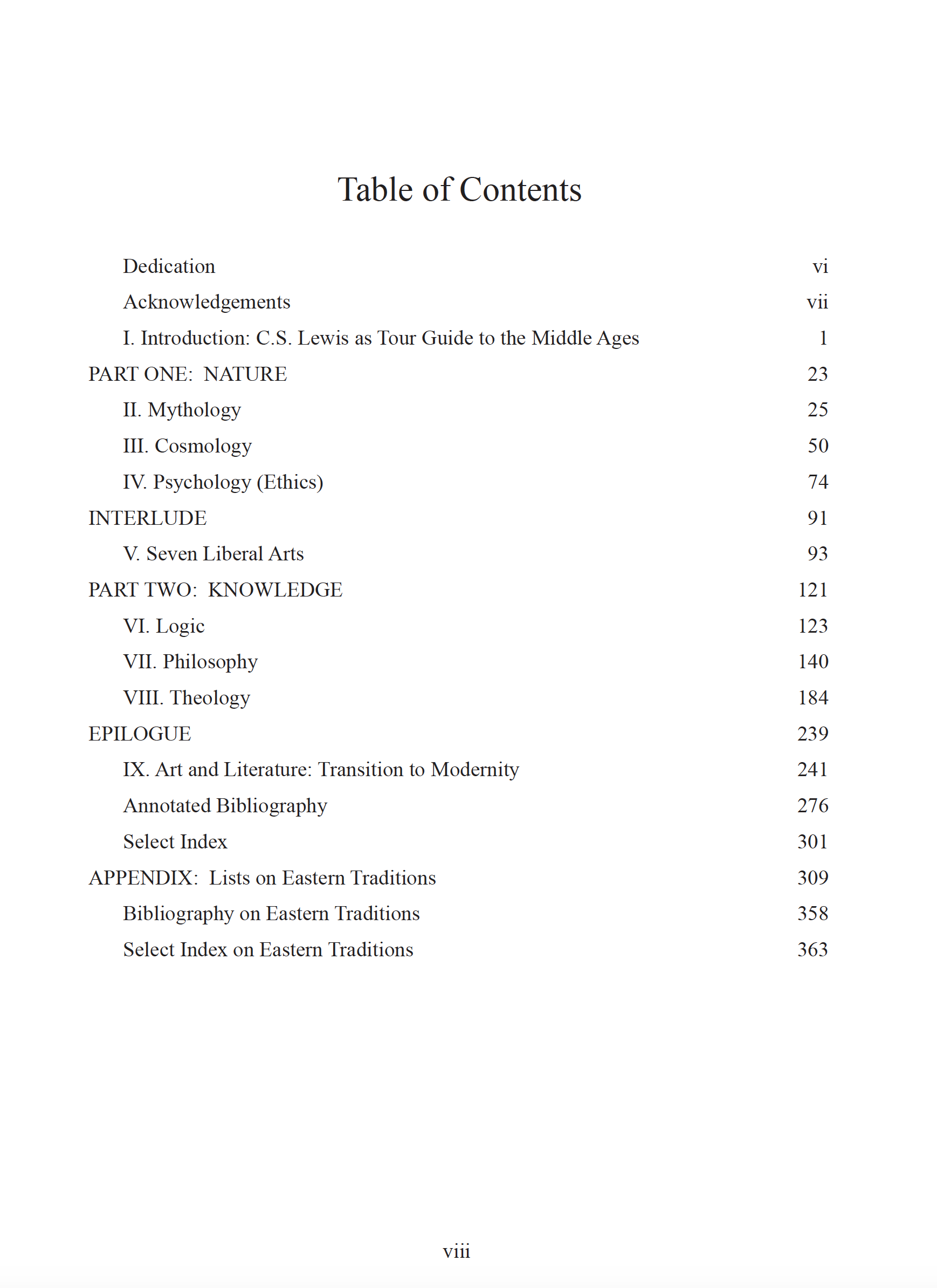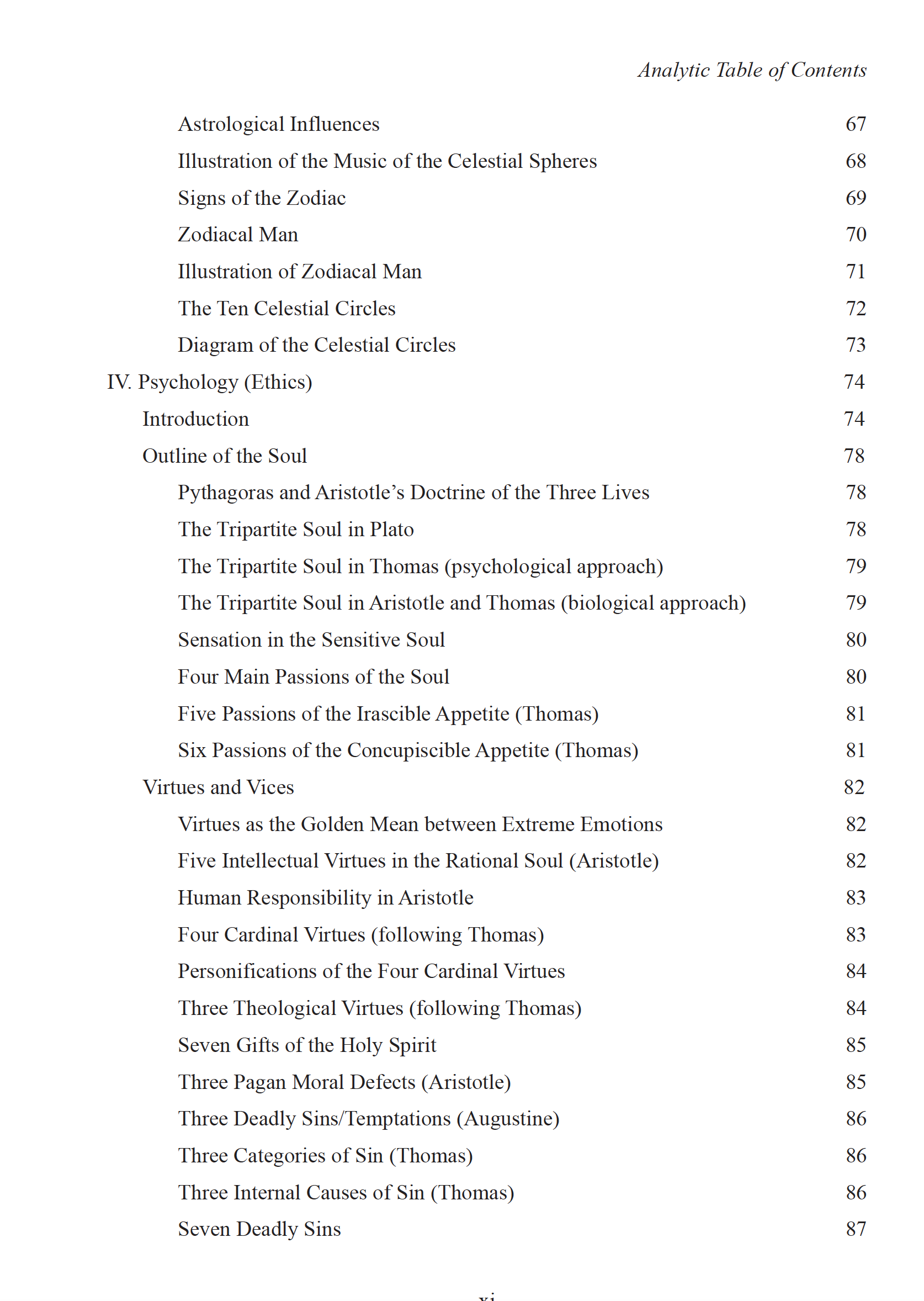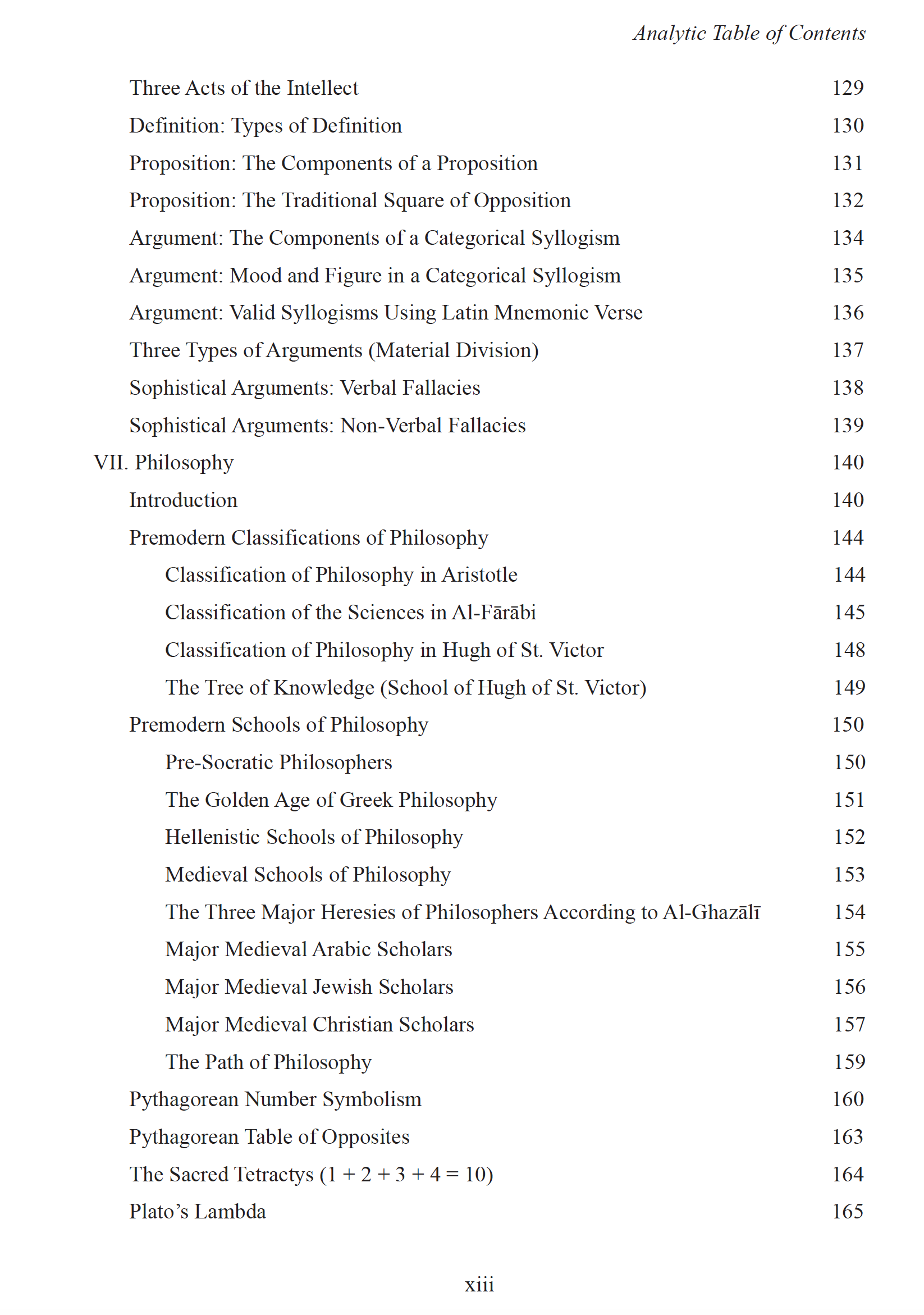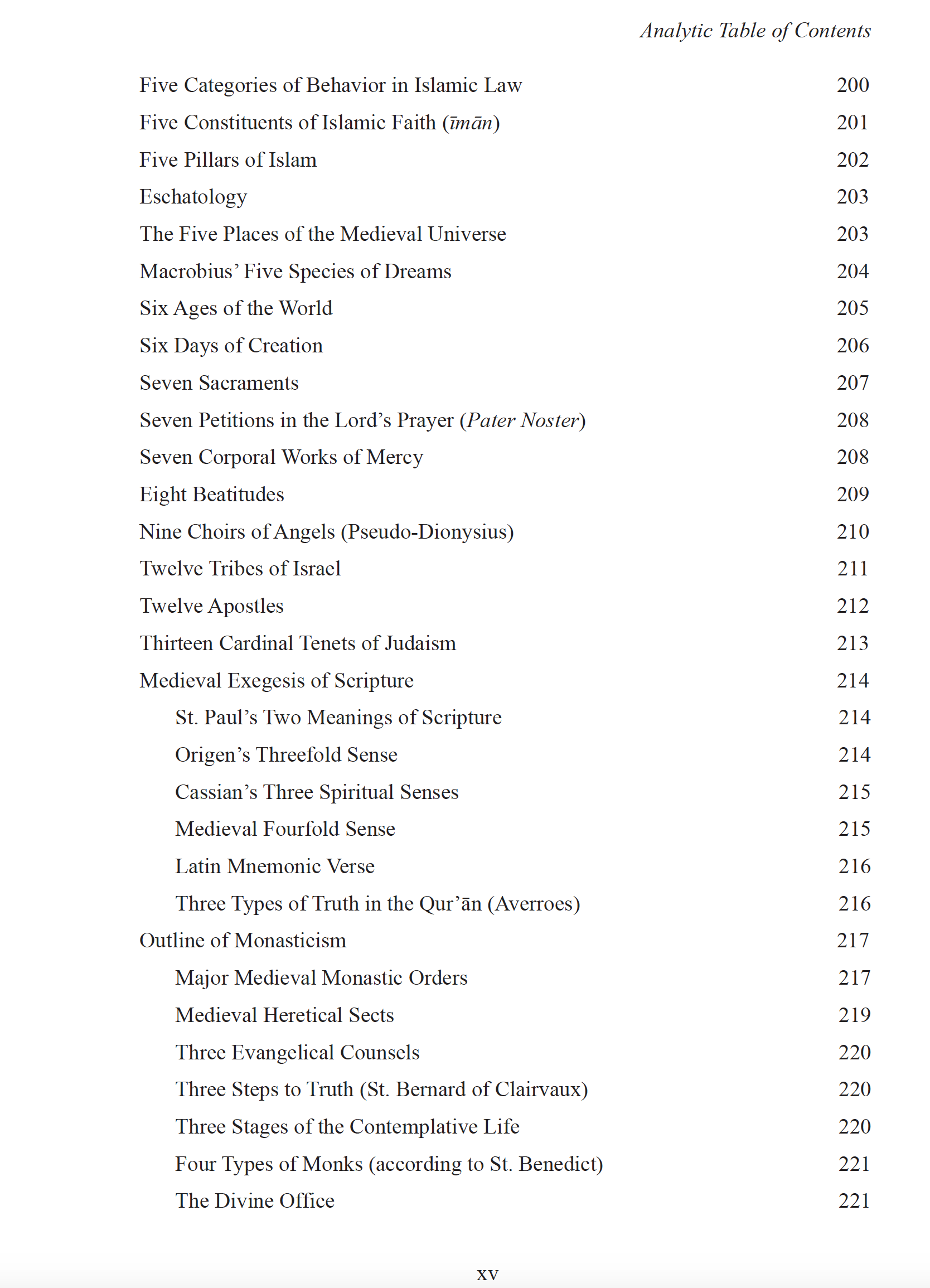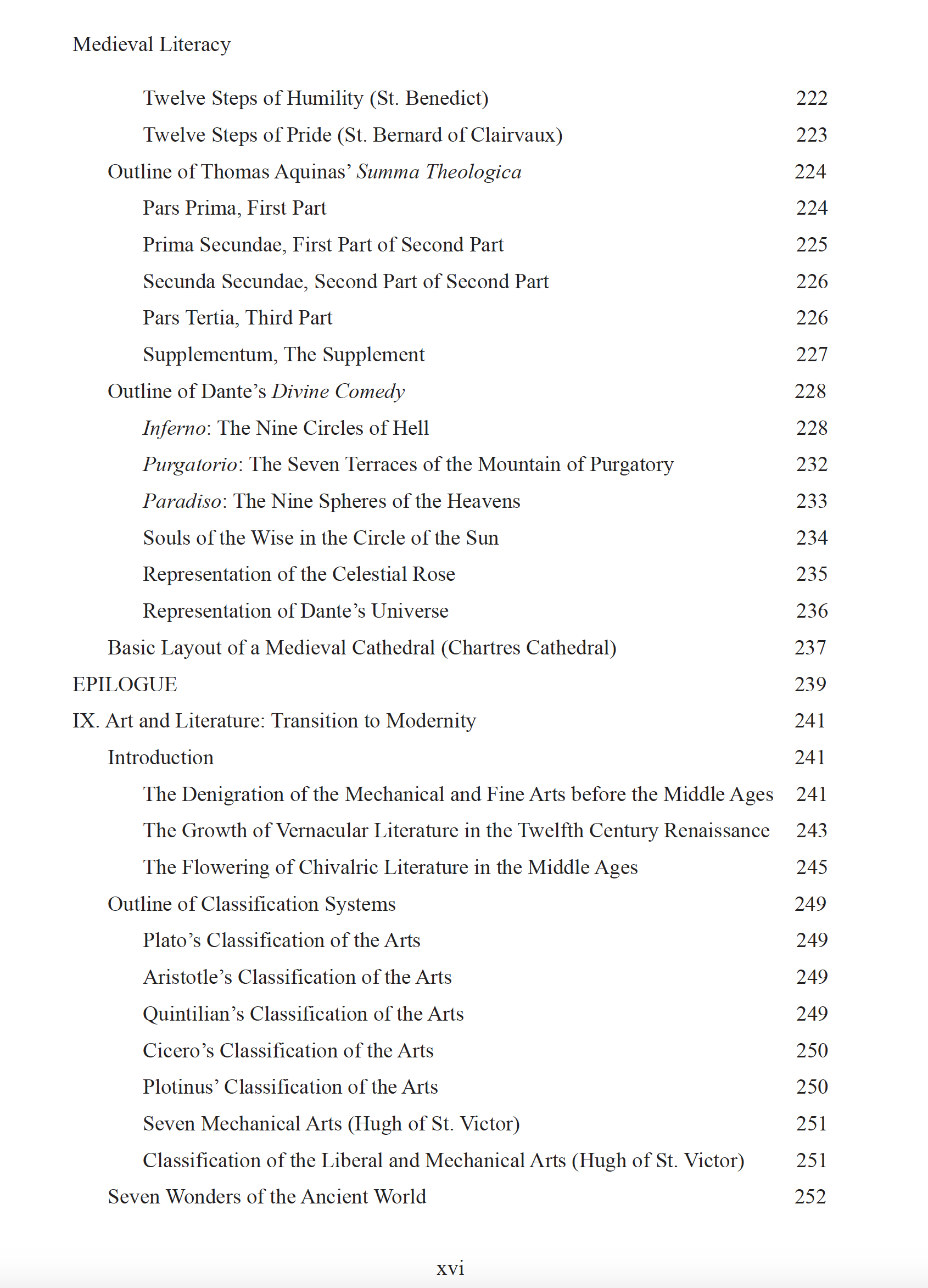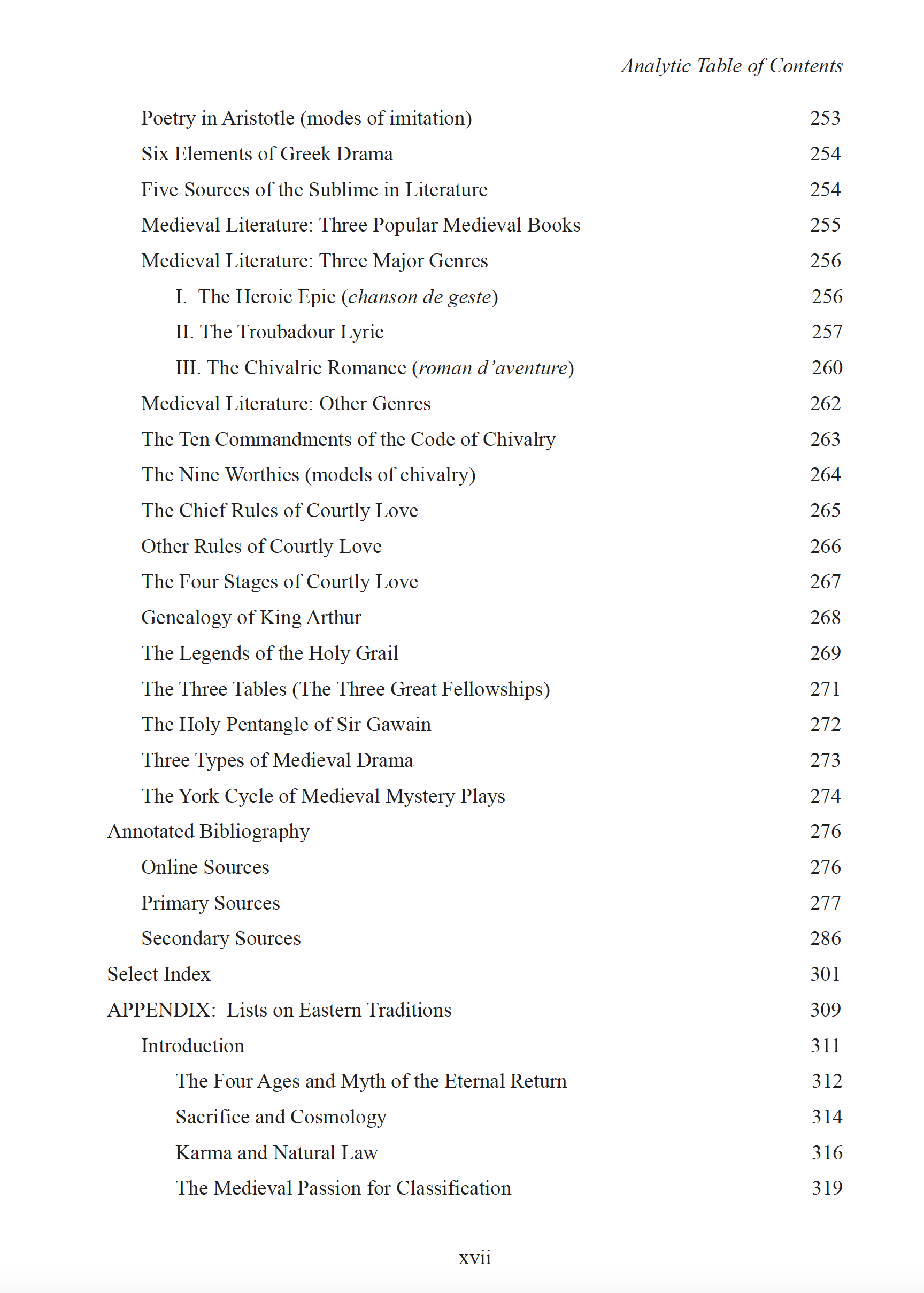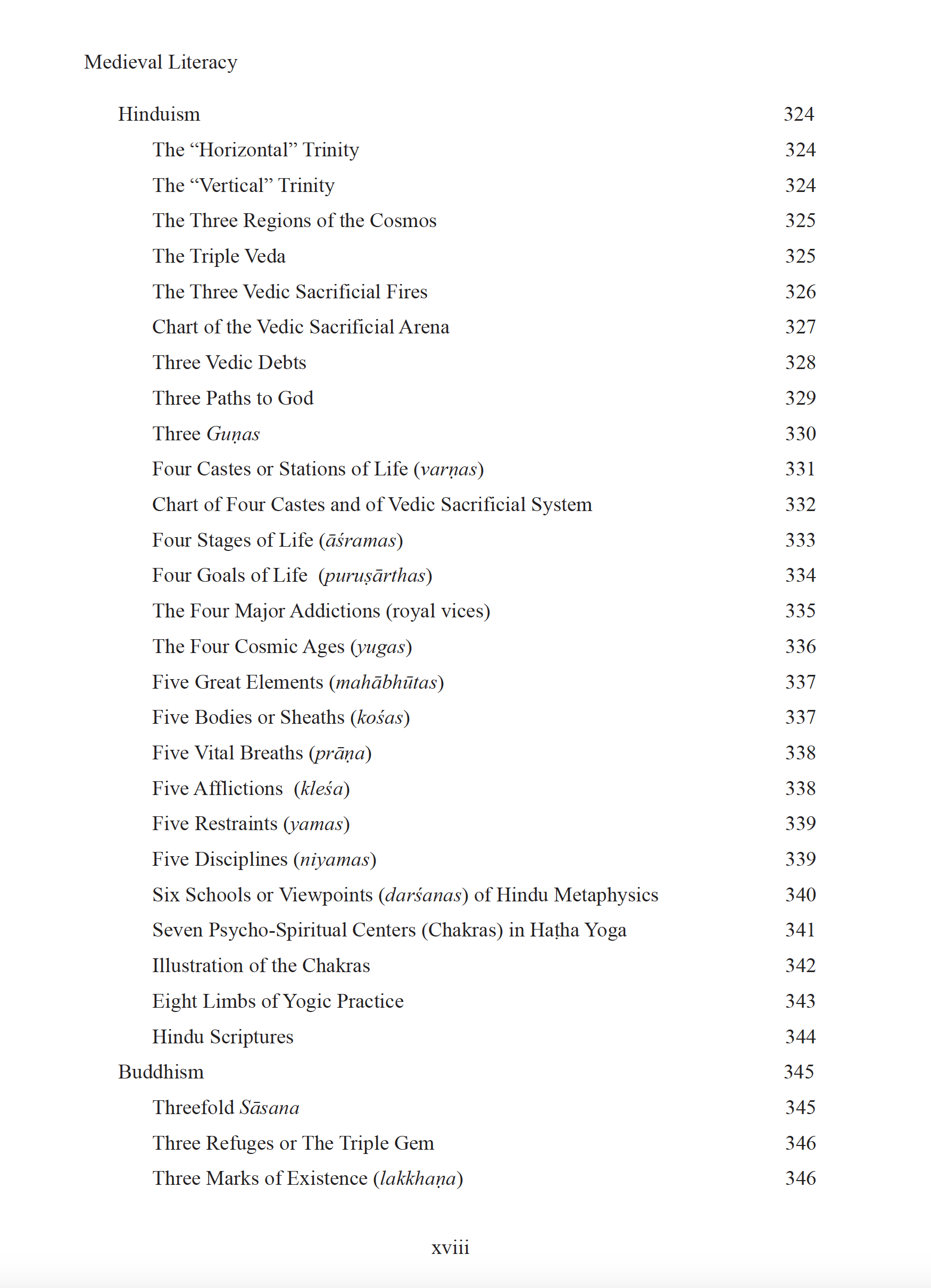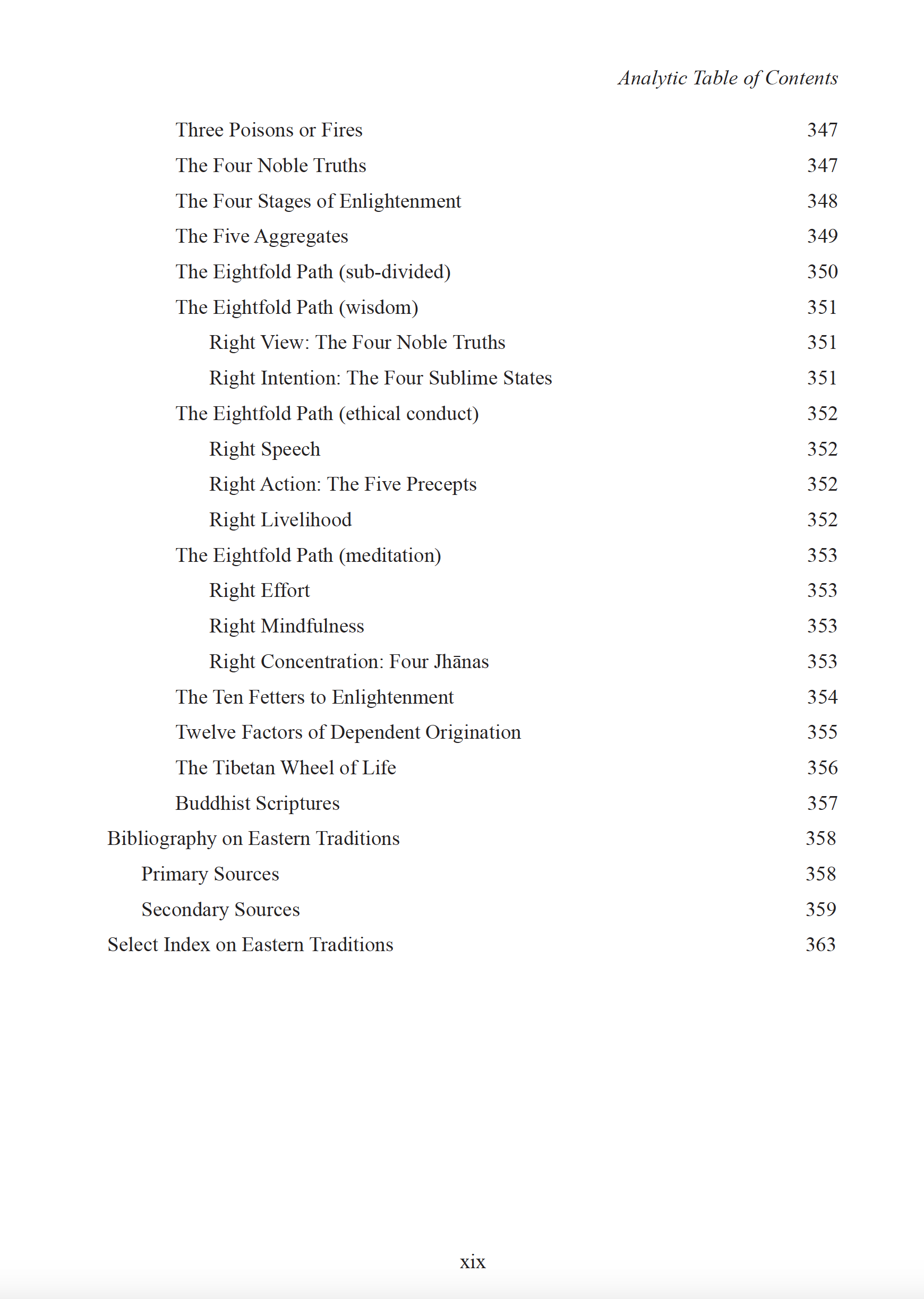The author of this volume has provided students and scholars of the Middle Ages with an indispensible vade mecum, a guide for those new to the study of medieval thought as well as a resource for specialists. One would do well to keep this volume near-to-hand when reading or researching medieval literature, philosophy, theology, science, or art.
A quick glace at the author’s “Analytic Table of Contents” is a signpost itself to the richness ahead in a volume at once a sustained and beautifully written intellectual history and a reference work that will take its readers to new insights and on their own scholarly journeys. This book follows the tradition of literacy books that extol every form of content based education including Cultural Literacy by E. D. Hirsch, Jewish Literacy by Rabbi Joseph Telushkin, Religious Literacy by Stephen Prothero, Spiritual Literacy by Frederic Brussat, and Historical Literacy by Paul Gagnon.
However, while Medieval Literacy is like E. D. Hirsch, Jr.’s The Dictionary of Cultural Literacy: What Every American Needs to Know, it is not in dictionary format like Hirsch, but in a unique “list” format that parallels the encyclopedic approach of the medievals themselves. Medieval Literacy could be described as “what every modern needs to know” about the medieval mind — for the modern reader’s own benefit, even when such a reader has no immediate interest in the medieval world.
The structure of Medieval Literacy is much different from all these works. While these works are designed to be works of scholarship, Medieval Literacy will have a more pedagogic appeal – taking scholarship to the public in a scholarly, respectable manner. The approach is medieval in content (a landscape of the medieval mind) as well as in form – a compilation of lists.
—-
Myths About the Middle Ages
Myth: In the Middle Ages people believed the world was flat.
Fact: Circles dominated all cosmological thought.
Myth: Society has progressed significantly since the Middle Ages.
Fact: The Wheel of Fortune makes at least as much sense as the Myth of Progress (cf. C. S. Lewis’s notion of “chronological snobbery”).
Myth: The Middle Ages was a time of superstition and ignorance.
Fact: The 12th Century Renaissance (seven liberal arts, rise of the university, medieval exegesis) was at least as significat as the Italian Renaissance.
Myth: There was no technological innovation during the Middle Ages.
Fact: The Middle Ages was a time of significant inventions.
Myth: The Middle Ages were a time of extreme sexism and violence (Pulp Fiction).
Fact: The phenomena of troubadour poetry, courtly love, and chivalry gave an unprecedented status to women and tempered the violence of the warrior class – the knights. The Middle Ages had more respect for the natural world than modernity does.
Myth: Modern Islam is trying to return Western civilization to the Middle Ages.
Fact: Islam saved Western civilization.
Supra lunam sunt aeterna omnia. Beyond the moon are all the eternal things. – Cicero
Naturam expellas furca, tamen usque recurret. You can try to drive out Nature with a pitchfork, but she will always return. – Horace
